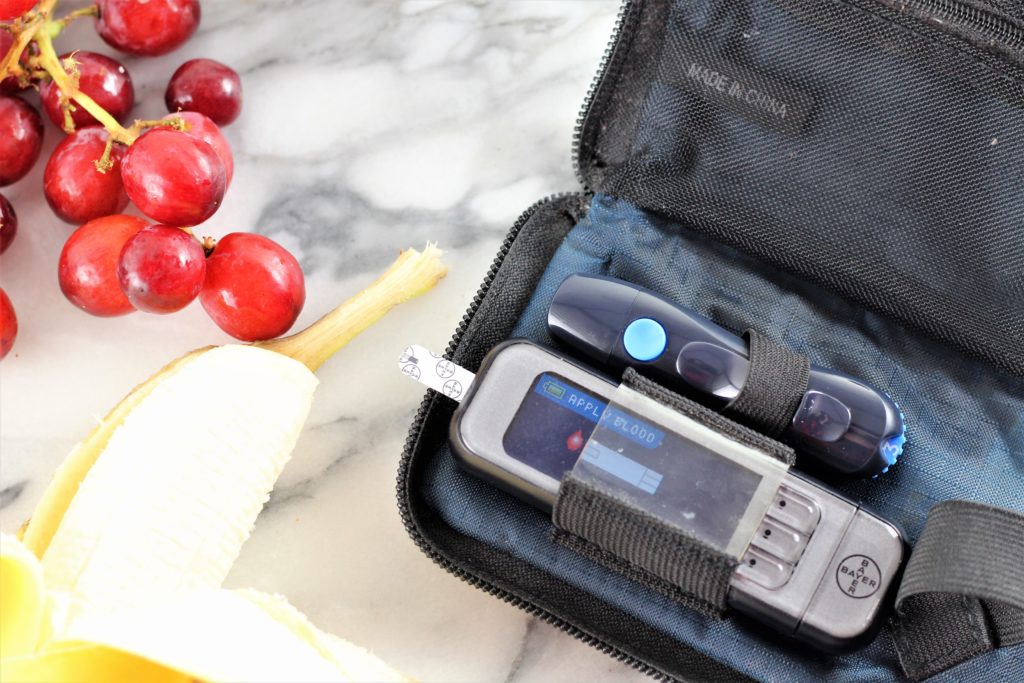
Learn how to achieve blood sugar balance with this quick and easy resource guide that covers the most important things to know.
I get it. Balancing blood sugars can be tough and at times may seem impossible. But blood sugar balance is actually easier than you think. You just need to know what to look for and how to properly evaluate a nutrition label.
Ever wonder, what balances blood sugar?
Blood sugar balance may seem like the unattainable unicorn, but there are actually three key nutrients that make it much easier to achieve than you’d think.
Many diabetes resources focus on what to take out of your diet and can make it seem like any hope of finding joy in food again is lost.
But, it’s not!
There are three things I want you to focus on ADDING to your diet to achieve blood sugar balance:
- Fat
- Fiber
- Protein
Keep reading to see how these nutrients help balance blood sugars.
Note: This article is not intended to provide medical advice, diagnosis, opinion, treatment or services. This article and the links contained in it provide general information for educational purposes only. The information provided in this article is not a substitute for medical care, and should not be used in place of the advice of your physician or registered dietitian.
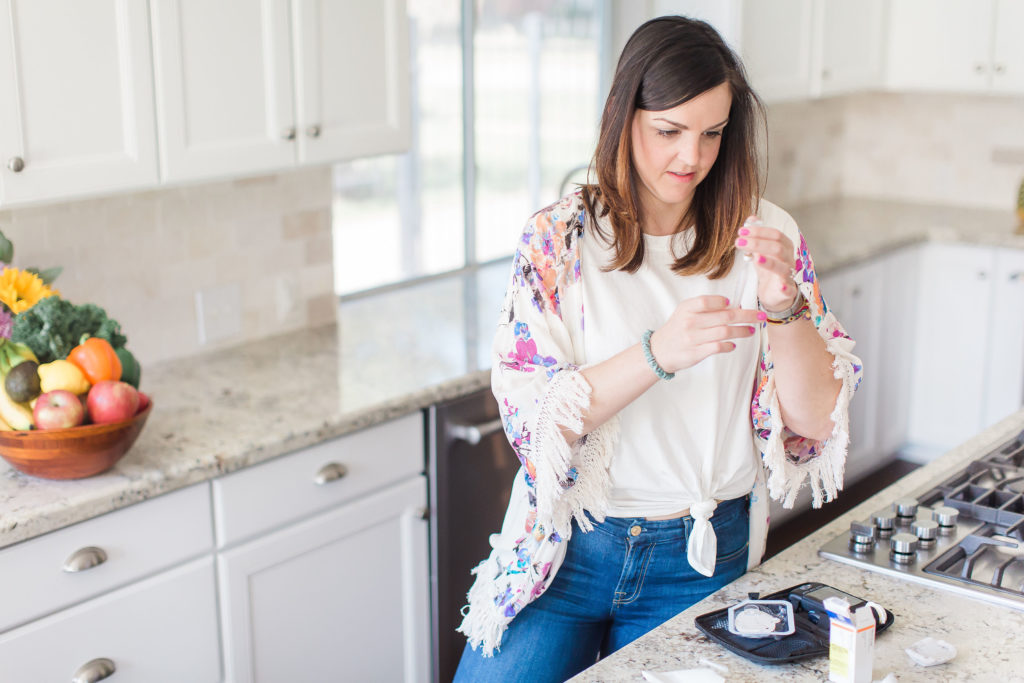
Foods that regulate blood sugar and have fat, fiber, and protein
So, what do I mean by adding fat, fiber, and protein to your diet?
Focus on finding foods that are good sources of these nutrients. Here’s some examples …
Fat sources:
- Avocado
- Nuts
- Nut butter
- 2% or full fat dairy
- Cheese
- Lean meats (even though they are lean they still have fat)
- Fatty fish: salmon, tuna, etc.
- Eggs
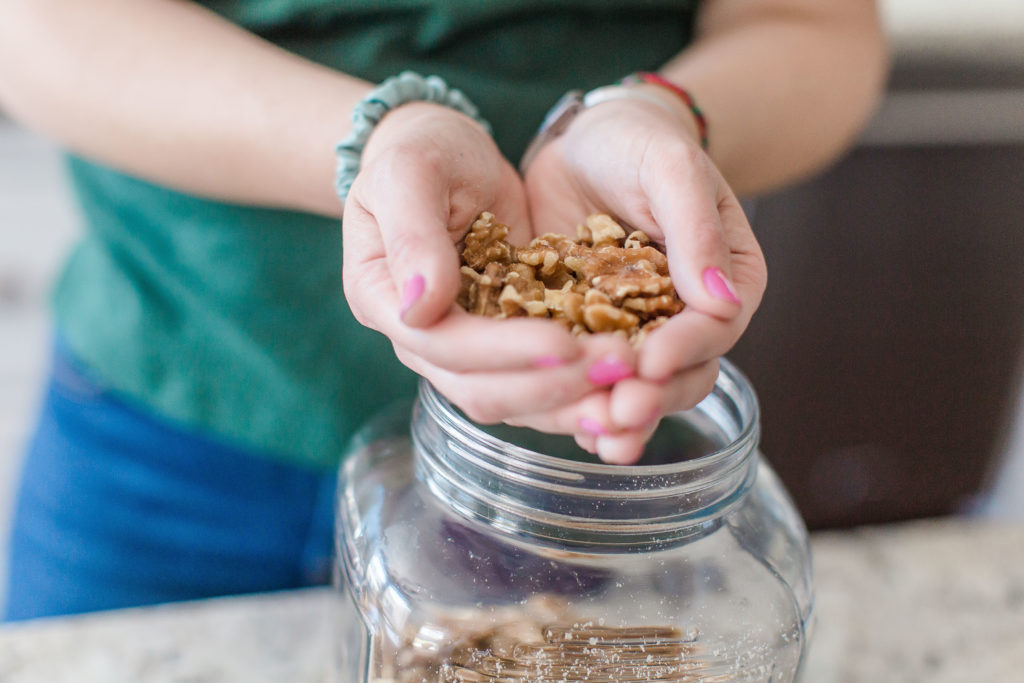
Fiber sources:
- Fruits
- Veggies
- Whole grains
- Nuts
- Seeds
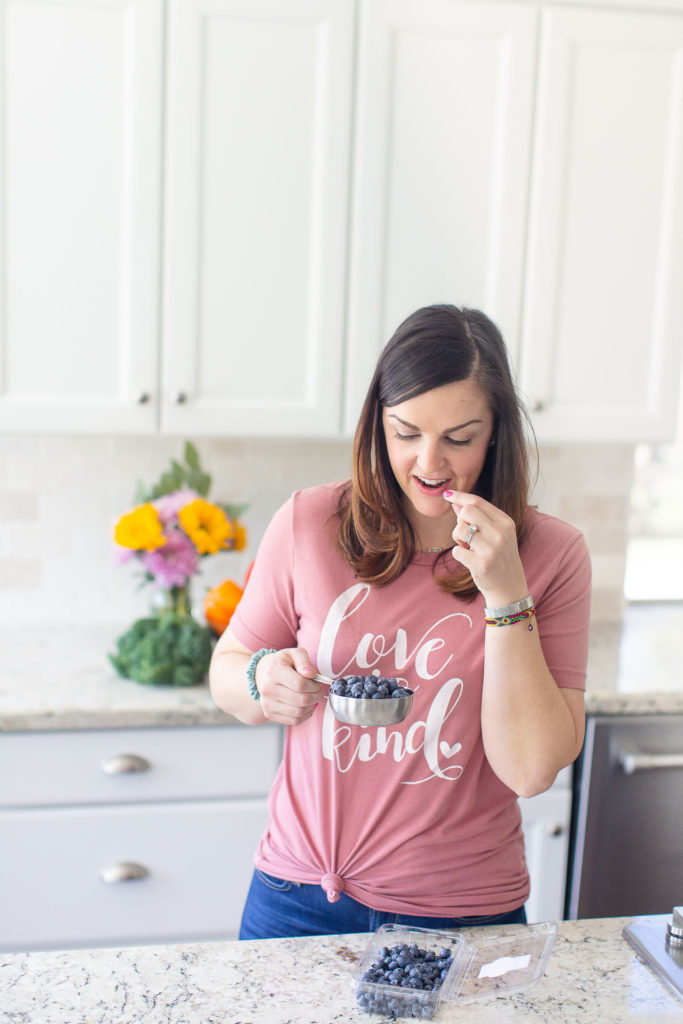
Protein sources:
- Meat
- Poultry
- Seafood
- Eggs
- Tofu
- Beans
- Quinoa
- Oats
- Greek yogurt
- Milk
How to balance blood sugar
How do you put this into practice? How do you balance blood sugars? Here’s some examples of putting it into practice:
- Toast: instead of eating just a plain piece of white bread you could…
- Add butter for fat
- Swap it out for a piece of whole grain toast to add fiber
- Add avocado for fat and fiber
- Add an egg on top for fat and protein
- Add a nut butter to add fat and some protein
- Milk: Switch from skim milk to 2% or whole milk to add fat
- Oatmeal: instead of eating it plain, try adding…
- Nuts or nut butter for fat and fiber
- Fruit for fiber
- Greek yogurt for protein
- Rice or pasta: make these more blood sugar friendly by adding:
- A protein source like meat or tofu
- A fat source like avocado or eggs
- Choosing brown rice, whole grain pasta, or a bean-based product for more fiber and protein
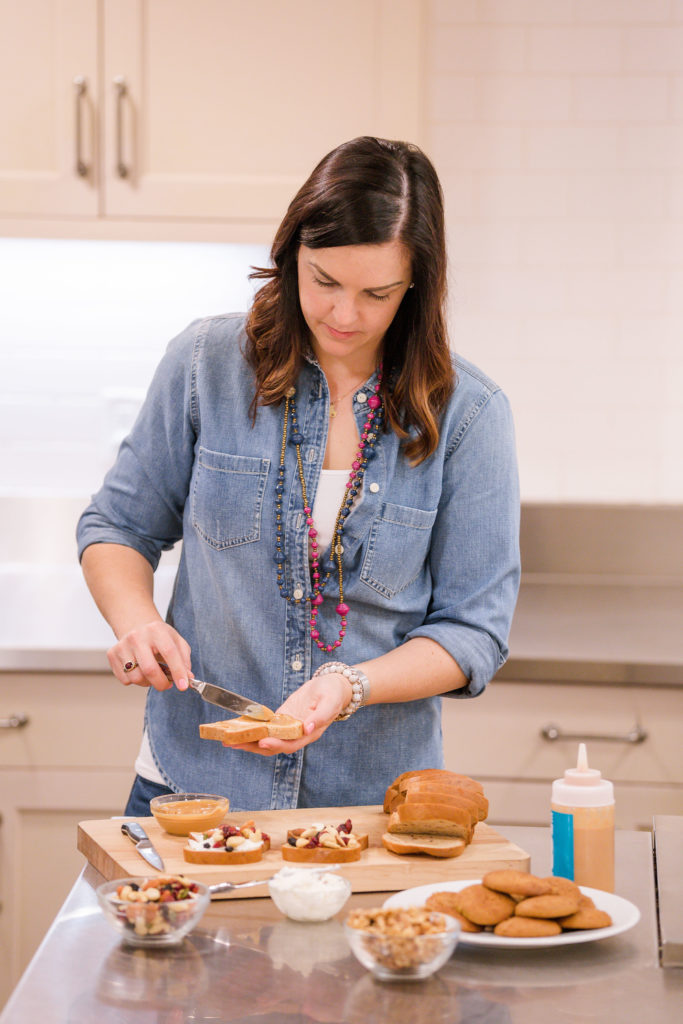
And for even more examples of blood sugar balancing meals, snacks and recipes make sure to check out my diabetes cookbook The Easy Diabetes Cookbook!
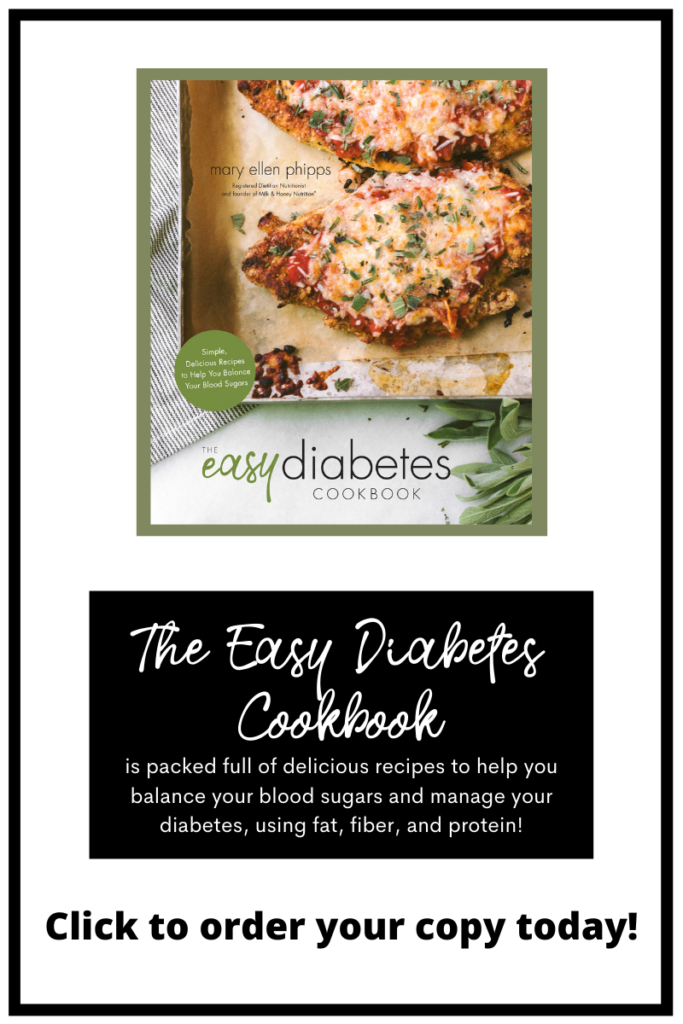
What to look for on food labels for diabetes
You probably figured this out by now, but the key nutrients you want to look for are fat, fiber, and protein. But we also need to look at the amount of sugar (both natural or added) in a food.
Sugar is the quickest acting carbohydrate and will raise blood sugars very quickly. So, when we can balance that out with fat, fiber, and protein, we can achieve blood sugar balance. (Note: I did not say to avoid sugar or to eat sugar free. That’s not necessary or recommended.)
Think of it like a roller coaster. Consuming sugar without any fat, fiber, or protein results in a really quick rise in blood sugar and then an equally quick fall.
But if we have some fat, fiber, or protein on board, these can act as buffers on this response. They help to “flatten the curve” of the blood sugar response as shown below.
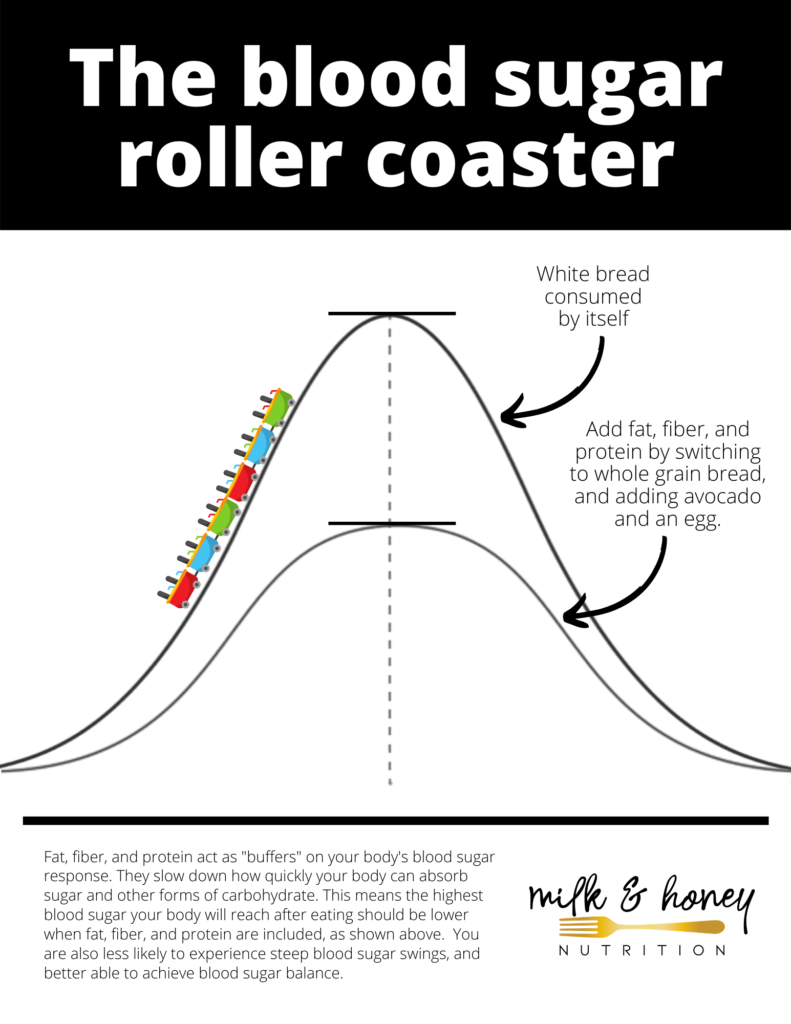
I’ll show you some examples of food labels and how to achieve this in the next section.
How to read nutrition labels for blood sugar balance
When looking at a food label for blood sugar balance, first find these nutrients: Total fat, Fiber, Protein, and Sugar.
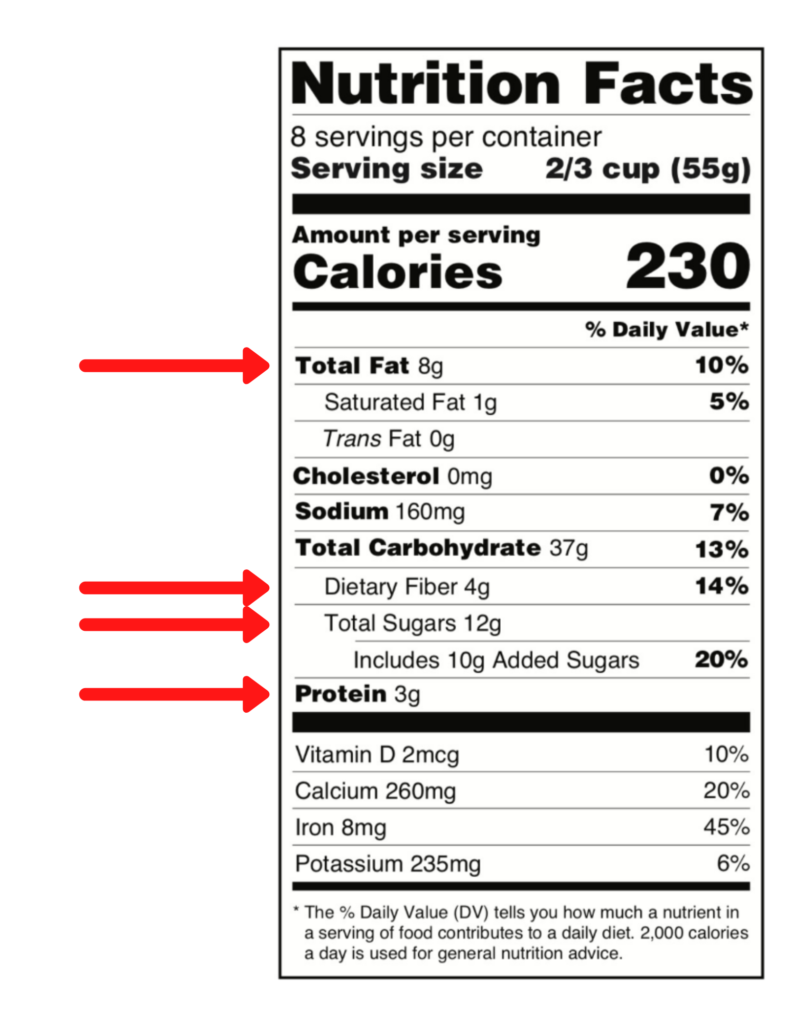
Now, I would imagine that you’re hoping I’ll give you some exact numbers to look for here. But, I can’t. Each and every person with diabetes, pre-diabetes, metabolic syndrome, or any other condition that warrants pursuing blood sugar balance is different. One person may need more fat to balance their blood sugars while another may need more protein.
So, where do you start? First, pay attention to these nutrients. Get in the habit of asking yourself, “Ok, do I have at least 3-5g (or more) of fat, fiber, and protein in this meal or snack?” And second, try to avoid eating carbohydrates by themselves. Make sure you’re adding in that fat and protein, and choosing carbohydrates that have fiber in them.
After that, it’s up to you to note how you feel after eating. What is your energy level like 2 hours later? Are you still satisfied or already hungry again? Are you able to think clearly or are you experiencing a little bit of brain fog? And if you have a blood sugar meter to use, test your blood sugar about 2 hours after you eat and see where you’re at. And then make note of what you ate… was it more fat, more protein, both?
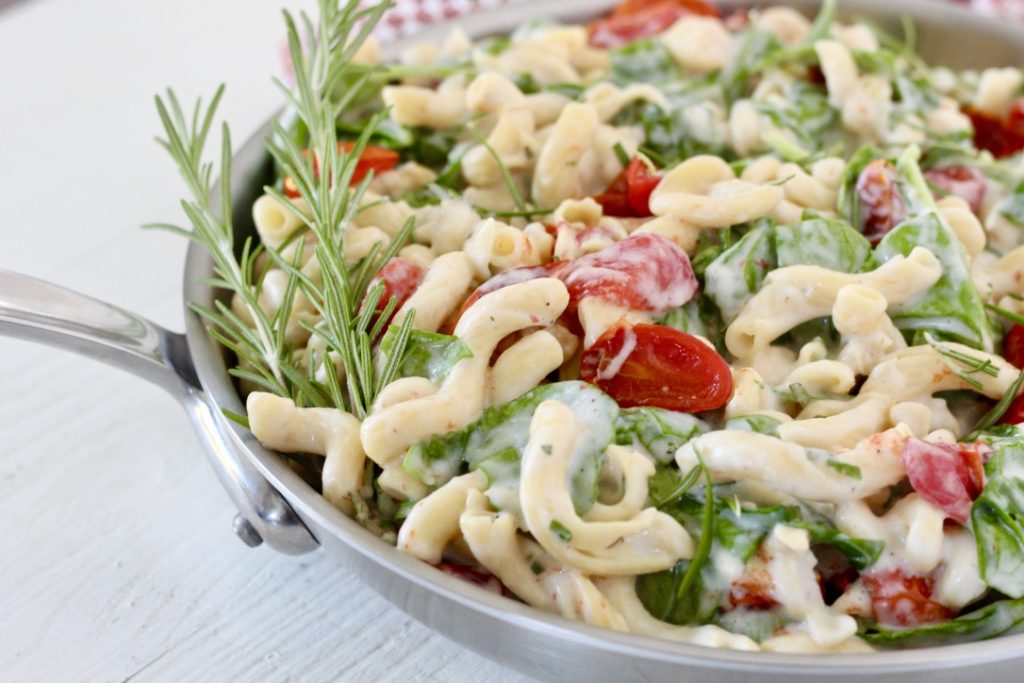
What about when blood sugars go low? Foods that raise blood sugar
Now, as I alluded to above, foods that have sugar and minimal amounts of fat, fiber, and protein, will raise blood sugars quickly. Under normal circumstances, this is not what we want … but what about when your blood sugar drops low?
When your blood sugar is low, you want to avoid fat, fiber, and protein. How many grams of sugar to consume to treat your low blood sugar will depend on a number of factors including (but not limited to):
- Body size
- Activity level
- Age
- Lifestyle
- What you’ve eaten that day
- What you were doing before the low happened
- And more…
This is an article I wrote with more detailed info on how to treat low blood sugars with food.
What other questions do you have about blood sugar balance? Leave a comment below and I’ll answer it!
And make sure to check out these other articles I have on this topic…
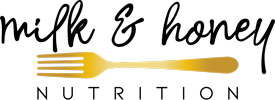
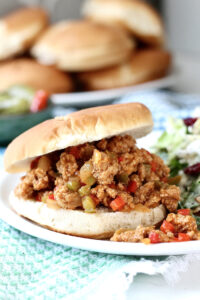
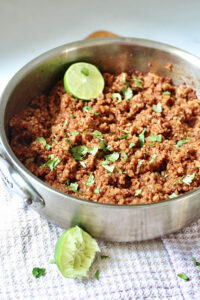
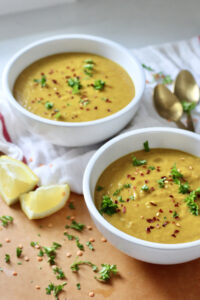

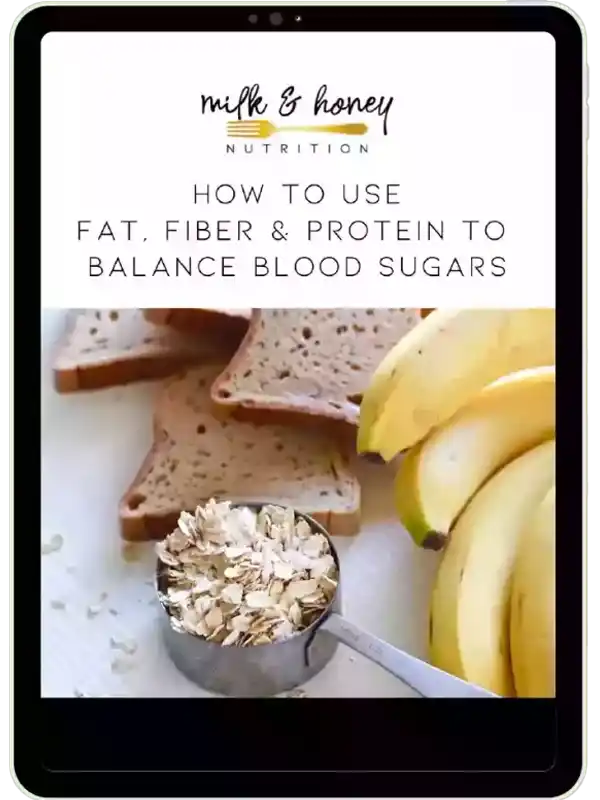
10 Responses
Thank you for the abundant and helpful info!
I just had a quick question, is it 3-5 g of each (Fat, Fiber and Protein) or total? Thank you for the article. I have your cookbook and I am excited to try some of the recipes in it!
Hi there! So glad you found it helpful! Ideally we’d like to see 3-5g of each of those nutrients but there’s not hard and fast rule about how many grams… it’s all about balance! 🙂
This is such a helpful article! I’m so glad I found you!
I love your attitude and approach! I’m having a problem with morning sugars being too high and have an additional challenge of dairy, gluten, corn and soy allergies. I know a great snack at bedtime would help but am having a challenge putting something together consistently. For a snack that works, most evenings its olives, avocado, some nuts, feta cheese (the goat milk kind) and some berries but that’s an assembly line snack and I would like something easier to keep bedside in case I forget, or don’t feel like going downstairs. Inspiration would be great since my energy levels have been low lately and I need to break this cycle.
Thank you for adding beans and quinoa to the ok list. So many people believe these are carb no no foods but if they were taught how to read a label they would understand these are good carbs with fiber as a bonus.
I often do carrot sticks & peanut butter as a bedtime snack.
Came across this while googling diet tips since I just got diagnosed with a mild case of gestational diabetes while I’m in my third trimester. What’s tough is being pregnant has its own set of diet rules that now need to align with these! Day 1 in and I’m a bit overwhelmed, but I know I’ll get the hang of it. Do you have any experience there, by chance? For example I need to push high protein/high calcium, but they say don’t drink straight up milk (who knows why). Just thought I’d ask since you seem super knowledgeable! Thank you so much already for all your awesome tips. 🙂
Hello,
Is white pasta okay to have? I just don’t like the taste of whole grain or chick pea pastas?
Everyone is unique but most people with diabetes can still enjoy regular pasta… just be sure to combine it with some fiber and protein sources! Speak to your diabetes care team with any specific questions.